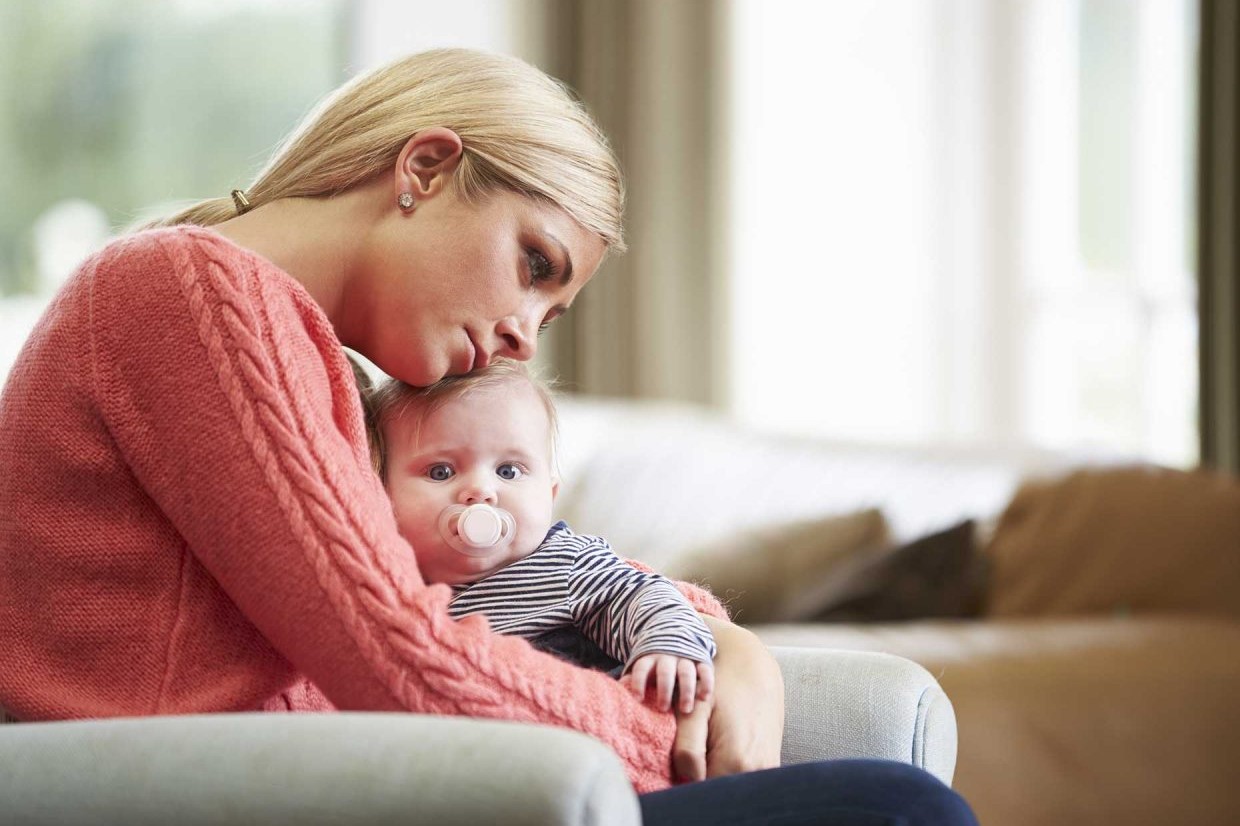
Baby blues, what it is and why it is different from postpartum depression
Baby blues and post-partum depression: the birth of a baby is an event typically associated with an ideal of happiness, satisfaction and joy for parents, so much so that it seems to many that it is impossible for a new mother not to feel fully happy
In reality, soon after the birth, the woman is faced with a radical change in her life, accompanied by great physical and psychological stress that can lead to instability, sadness and a sense of inadequacy that can prevent her from having an immediate emotional connection with her baby.
How, however, can we recognise physiological postnatal ‘melancholy’, the so-called ‘baby blues’, from a full-blown form of depression, post-partum depression? Let’s first take a look at the characteristics and differences.
Baby blues: what are they?
The baby blues or maternity blues (where ‘blues’ stands for melancholy) is a transient and reversible para-physiological condition that women experience in the week following childbirth in about 70 to 80 per cent of cases, mainly caused by hormonal changes typical of the postpartum period.
Symptoms of the baby blues
Symptoms of baby blues include very conspicuous emotional reactions on the part of the mother, such as
- sudden, unmotivated crying
- unstable mood;
- feeling of inadequacy;
- unwarranted sadness;
- irritability.
How long they last
It is important to emphasise that these disorders have two very specific characteristics: they begin shortly after the event of childbirth (tending to occur in the next three to four days) and are transitory, i.e. they last from a few days to a maximum of one to two weeks.
In fact, baby blues are absolutely reversible, disappearing once the woman’s hormonal balance has settled down.
Don’t worry, it goes away! How?
The symptoms of ‘baby blues’ generally have a positive natural evolution, gradually improving until they disappear.
Since it is not an illness, it is not necessary to resort to specific therapies, but it can help to be ‘cuddled’ by those close to you, so that you feel supported at this delicate time.
The partner and the affections of the new mother can in this sense give her a hand, providing reassurance, listening and support, and why not, help in the daily management of the baby and the home.
Even if the little one monopolises all the attention, taking care of oneself by carving out moments of tranquillity and rest can help alleviate melancholy and lighten the heaviness of the initial difficulties.
Baby blues and postpartum depression: differences and when to seek help
The new mother in distress does not always ask for help: sometimes she may be embarrassed to talk about her state of mind, feeling ‘at fault’ for her condition.
Therefore, it is essential to pay attention to all the signs of discomfort that are perceived in the woman, in order to distinguish physiological baby blues from postpartum depression.
Contact the doctor or seek help when the malaise
- arises about 1 month after childbirth, sometimes coinciding with the return of the menstrual cycle;
- interferes with daily activities, including self-care and baby care;
- it is persistent and lasts more than 2 weeks;
- it does not seem to improve; on the contrary, it worsens.
Postpartum depression, in fact, is a real form of depression, which should be brought to the attention of the specialist as soon as possible.
If detected, it can be treated and cured, but if neglected, it can lead to life-threatening thoughts or behaviour.
Read Also:
Emergency Live Even More…Live: Download The New Free App Of Your Newspaper For IOS And Android
What Is Postpartum Depression?
How To Recognise Depression? The Three A Rule: Asthenia, Apathy And Anhedonia
Postpartum Depression: How To Recognise The First Symptoms And Overcome It
Postpartum Psychosis: Knowing It To Know How To Deal With It
Schizophrenia: What It Is And What The Symptoms Are
Childbirth And Emergency: Postpartum Complications
Intermittent Explosive Disorder (IED): What It Is And How To Treat It
Management Of Mental Disorders In Italy: What Are ASOs And TSOs, And How Do Responders Act?
How Cognitive Behavioural Therapy Works: Key Points Of CBT
Emergency-Urgency Interventions: Management Of Labor Complications
Seizures In The Neonate: An Emergency That Needs To Be Addressed
Schizophrenia: Risks, Genetic Factors, Diagnosis And Treatment
Why Become A Mental Health First Aider: Discover This Figure From The Anglo-Saxon World
Attention Deficit Hyperactivity Disorder: What Worsens ADHD Symptoms
From Autism To Schizophrenia: The Role Of Neuroinflammation In Psychiatric Diseases
Schizophrenia: What It Is And How To Treat It
New Epilepsy Warning Device Could Save Thousands Of Lives
Understanding Seizures And Epilepsy
First Aid And Epilepsy: How To Recognise A Seizure And Help A Patient
Childhood Epilepsy: How To Deal With Your Child?
Epileptic Seizures: How To Recognise Them And What To Do


